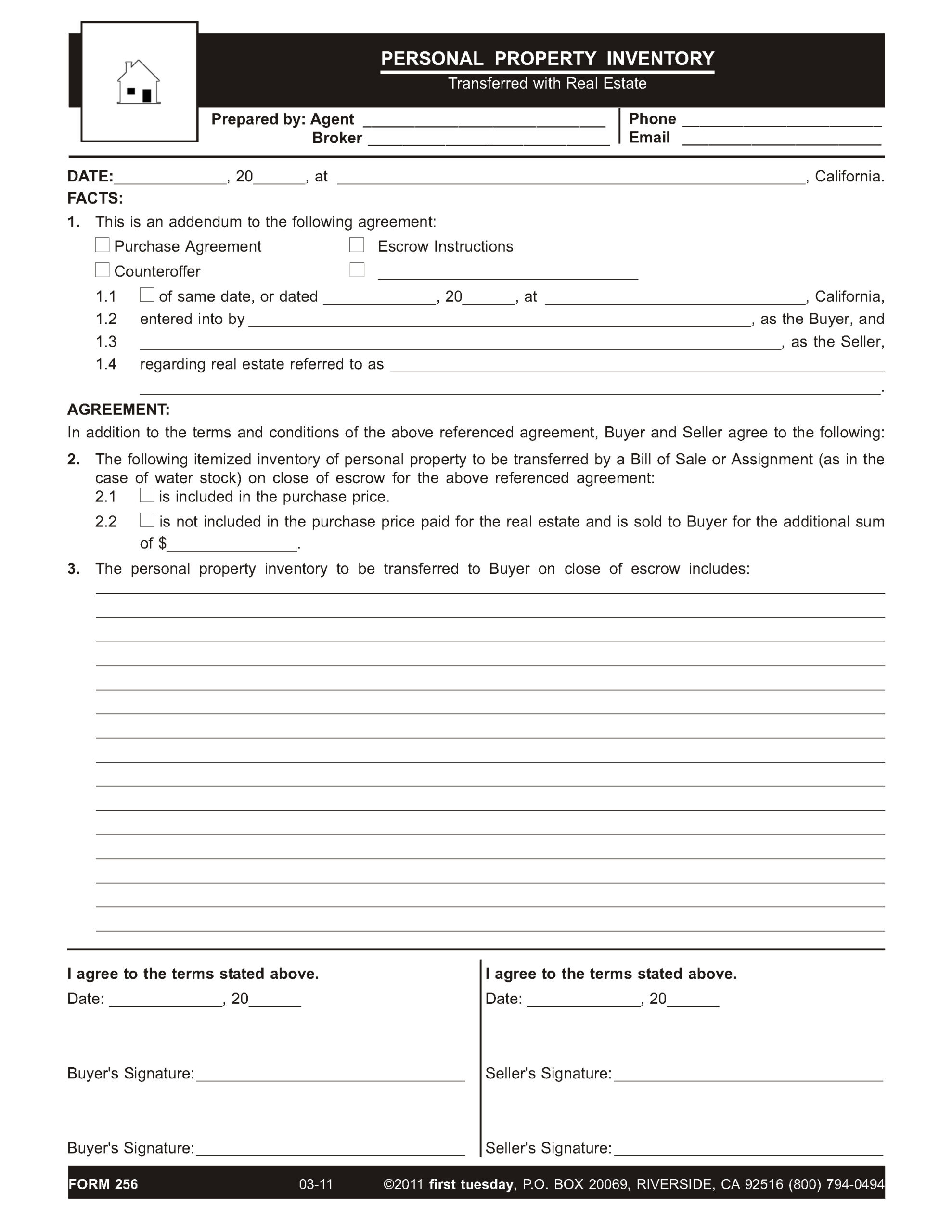An agent uses this form when preparing a purchase agreement or counteroffer for a real estate transaction when the transfer of personal property is included.

Personal property included in the sale of real estate
Real estate and personal property exist in two independent ecosystems – one mobile, the other immobile (except maybe in our earthquake prone California). In combination, a real estate sale often includes the sale of personal property – furnishings and equipment – as part of the transaction.
First the basics. Property is anything which may be owned. In turn, ownership is the right to possess the property owned and use it to the exclusion of others.
The right to possess and use property includes the rights to:
- occupy;
- sell or dispose;
- encumber; or
- lease.
Property is divided by types into two primary categories:
- real estate, also called real property or realty; and
- personal property, also called personalty.
Real estate is characterized as immovable, whereas personal property is movable. [Calif. Civil Code §657]
Real estate includes land and anything permanently affixed or appurtenant to it, such as buildings, trees or rivers, built-ins and rights in other real estate, but not trade fixtures. [CC §658]
Personal property is defined, by way of exclusion, as all property not classified as real estate. [See RPI e-book Legal Aspects of Real Estate, Chapter 3]
When arranging a sale of real estate which includes the transfer of personal property, an agent prepares a personal property inventory sheet describing the personal property to be transferred. The inventory sheet is attached to a purchase agreement or counteroffer as an addendum. [See RPI Form 256]
Analyzing the personal property inventory
An agent uses the Personal Property Inventory — Transferred with Real Estate published by Realty Publications, Inc. (RPI) when preparing a purchase agreement or counteroffer for a real estate transaction when the transfer of personal property is included. The form allows the agent to list the personal property to be included in the purchase price, or separately paid for as an additional sum. [See RPI Form 256]
The Personal Property Inventory — Transferred with Real Estate form contains:
- facts, such as the purchase agreement or counteroffer, date of the agreement, identify of the buyer and seller, and real estate involved [See RPI Form 256 §1];
- whether the personal property is included in the purchase price [See RPI Form 256 §2.1];
- when the personal property is not included in the purchase price, the additional price to be paid for the personal property [See RPI Form 256 §2.2];
- blank space to describe the personal property items to be transferred to the buyer [See RPI Form 256 §3]; and
- signatures of the buyer and seller. [See RPI Form 256]
Form navigation page published 01-2024.
Form-of-the-Week: Personal Property Inventory, and Security Agreement For Note Secured by Personal Property — Forms 256 and 436
Form-of-the-Week: Abandonment and Right to Reclaim Personal Property — Forms 581, 583 and 584
Article: Brokerage Reminder: The UCC-1 financing statement and securing debt with personal property
Article: Personal property as security
Client Q&A: How do I use personal property to secure a debt?
Video: Physical and Legal Aspects of Real Estate










